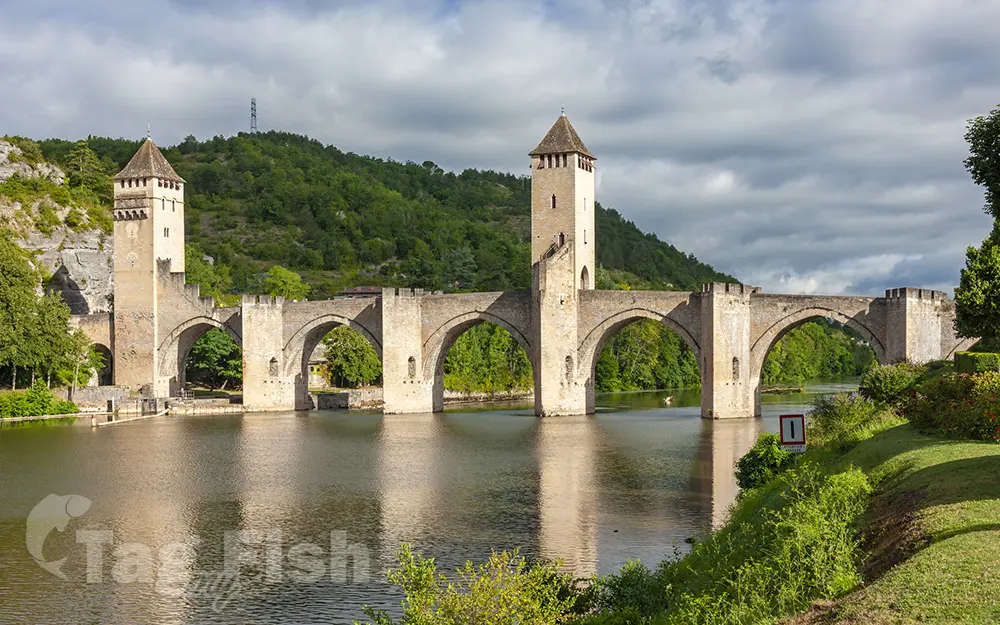Lot

General data
- Name: Lot
- Water system: Garonne
- Water type: River
- Progression: Garonne -> Gironde estuary -> Bay of Biscay -> Atlantic Ocean -> Planet Earth
- Climates: Temperate
- Continents: Europe
- Countries: France
The Lot is a river in France. It is a right-bank tributary of the Garonne. It rises in the Cévennes mountains, flowing west through Quercy, where it flows into the Garonne near Aiguillon, a total distance of 485 kilometres (301 mi). It gives its name to the départements of Lot and Lot-et-Garonne. The Lot is prone to flooding in the winter and spring, and has many dams in its upper catchment area, mainly on the Truyère, which produce hydroelectric power of strategic importance for the French national grid. Turbining can cause additional variations in flow throughout the 275 km of the river that has been extensively developed as an asset for tourism in the region. The major project to restore navigability of the river Lot was conceived by local stakeholders in Decazeville and Cahors in the 1970s. It meant restoring the many locks, and bypassing the medium-head dams built at five locations along the former waterway.

 English
English
 Spanish
Spanish
 German
German
 French
French
 Serbian
Serbian
 Russian
Russian

